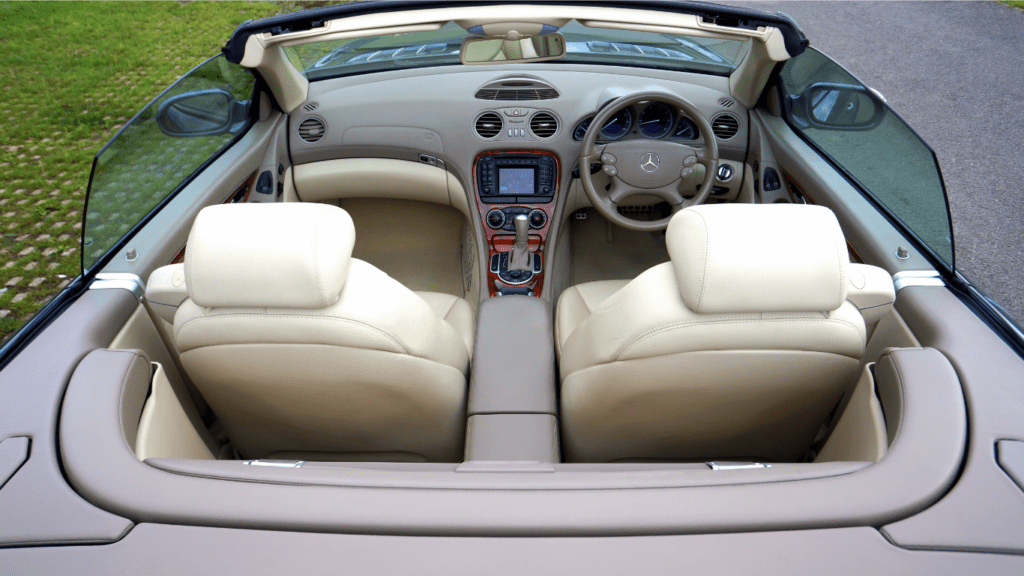Understanding Luxury Car Financing
Luxury car financing involves several key factors to ensure you make informed decisions. Loan terms can vary, ranging from 24 to 84 months. Shorter terms often mean higher monthly payments but less paid in interest. Longer terms lower monthly payments while increasing total interest paid.
Interest rates significantly influence the overall cost. Rates typically range from 3% to 10%, depending on credit score and market conditions. For example, a higher credit score usually gets a lower rate. Calculating the total interest over the loan’s life helps you compare options.
Down payments impact financing terms as well. A higher down payment reduces the loan amount and potentially lowers the interest rate. Typical down payments range from 10% to 20% of the car’s price. For instance, a $100,000 car with a 20% down payment requires financing $80,000.
Lease agreements offer an alternative to purchasing. Leases often require lower monthly payments compared to loans but come with mileage limits and potential fees. At the end of the lease, you’ll either return the car or buy it at a predetermined price.
Dealership financing versus third-party lenders is another consideration. Dealers may offer promotions, such as 0% financing for qualified buyers, but it’s essential to review all terms. Third-party lenders, like banks and credit unions, might provide competitive rates and flexible terms. Comparing multiple offers ensures meeting your financial goals.
Key Factors to Consider

When financing a luxury car, several key factors influence the overall cost and terms. Understanding these can help secure a favorable deal.
Interest Rates
Interest rates play a critical role in determining the cost of a luxury car loan. Rates typically range from 3% to 10%, with variations based on credit score and market conditions. Higher credit scores generally secure lower interest rates. Comparing rates is essential to minimize total interest paid over the loan’s term. Using online calculators can assist in estimating monthly payments and total costs.
Loan Term
The loan term directly impacts monthly payments and total interest paid. Terms usually span from 24 to 84 months. Shorter terms mean higher monthly payments but reduce interest over the loan’s life. Conversely, longer terms lower monthly payments but increase the interest paid overall. Choosing the right term depends on budget and financial goals. Evaluating different term scenarios helps in making an informed decision.
Credit Score
Credit scores significantly influence available financing options and interest rates. Scores above 700 typically yield favorable terms, while lower scores may result in higher rates. Before applying for a loan, checking and improving credit scores can be beneficial. Steps include paying off debts, correcting errors on credit reports, and avoiding new credit inquiries. A higher score can lead to substantial savings over the loan period.
Down Payment
A down payment reduces the principal loan amount, which can impact the interest rate and monthly payments. Larger down payments often lead to lower interest rates and reduced total interest. This can be achieved by saving a specified portion of the car’s price. Aiming for a down payment of at least 20% of the car’s value is recommended. Evaluating budget constraints helps determine the optimum down payment size.
Understanding and evaluating these key factors can provide significant benefits, such as securing more favorable financing terms and reducing overall costs, when purchasing a luxury car.
Types of Financing Options
Financing a luxury car involves several options, each with unique benefits and considerations. Understanding these can help secure the best deal.
- Traditional Auto Loans
Banks, credit unions, and online lenders typically offer traditional auto loans. These loans give you ownership, and repayment terms range from 24-84 months. Loan amounts depend on credit scores, income, and the car’s value. Interest rates generally fall between 3% and 10%, influenced by market conditions and your credit history.
- Leasing
Leasing allows use of the car for a set period, usually 24-48 months. Monthly payments are often lower than loan payments since you’re paying for the vehicle’s depreciation, not its full value. Leases often include mileage limits (e.g., 12,000-15,000 miles annually), with fees for exceeding these limits. At lease end, you return the car or can purchase it for a pre-determined price.
- Dealer Financing
Dealerships offer financing directly, often collaborating with banks or manufacturers. Dealer financing can provide convenience and potential incentives, such as lower interest rates or promotional terms. However, it’s crucial to compare these offers with external lenders to ensure competitive rates and favorable terms.
Pros and Cons of Financing vs. Leasing
Deciding between financing and leasing a luxury car involves understanding their respective benefits and drawbacks. Each option has unique features that influence long-term costs and ownership experiences.
Benefits of Financing
Financing provides ownership once the loan is repaid. With financing, I can drive as many miles as I want without worrying about mileage penalties. Customizing the car to my taste is also possible. The equity built in the car can be valuable if sold or traded later. Additionally, there’s potential for lower long-term costs compared to perpetual leasing.
Drawbacks of Financing
Higher monthly payments are common in financing compared to leasing. Even if I opt for a longer loan term to reduce monthly payments, the total interest paid increases over time. Depreciation affects car value, meaning it’s worth less by the time the loan is repaid. If my financial situation changes, selling a financed car to cover the remaining loan balance might be challenging.
Benefits of Leasing
Leasing offers lower monthly payments, making luxury cars more affordable. Leasing generally requires a smaller down payment. I can drive a new car every few years without worrying about selling an old vehicle. Maintenance costs are lower since warranty often covers the lease term.
Drawbacks of Leasing
Leasing comes with mileage limits, typically between 10,000 to 15,000 miles a year. Exceeding these limits incurs additional fees. Customizing the car is not an option since it needs to be returned in its original condition. At the lease’s end, I don’t own the car, which means continuous payments if I lease another vehicle. Ending a lease early results in costly penalties, limiting flexibility.
Additional Costs to Factor In
When financing a luxury car, several additional costs should be considered to fully understand the financial commitment. These costs can significantly impact your budget and long-term financial health.
Insurance
Insurance for luxury cars can be more expensive due to their higher value and cost of repairs. Comprehensive coverage often includes:
- collision
- liability
- gap insurance
which covers the loan balance if the car is totaled. I recommend getting quotes from multiple insurers and comparing coverage options to ensure the best rate.
Maintenance and Repairs
Luxury cars typically require specialized maintenance and parts, which can drive up costs. Regular servicing at authorized dealerships ensures the vehicle retains its performance and warranty but comes at a premium. Unexpected repairs can also be costly due to the high-quality materials and advanced technology used in luxury vehicles. Budget for routine maintenance and unexpected repairs to avoid financial strain.
Depreciation
Luxury cars depreciate quickly, losing significant value within the first few years. This depreciation affects the car’s resale value and equity. Calculating potential depreciation helps understand long-term financial impacts and can inform decisions about leasing versus buying. If planning to sell or trade in the vehicle, consider brands and models with better resale value to mitigate depreciation losses.
Tips for Securing the Best Financing Deal
Securing the best financing deal for a luxury car involves careful planning and strategic actions. Focus on the following tips to optimize your chances.
Shop Around
Comparing offers from multiple lenders is crucial. Banks, credit unions, and online lenders provide varying interest rates and terms. For example, if Lender A offers a 4% interest rate while Lender B provides 3.5%, choosing Lender B saves significant money over the loan’s life. Evaluate the total cost, not just the monthly payment.
Negotiate Terms
Lenders often have room for negotiation. When they present an offer, ask if a lower interest rate or better terms are available. Even a small reduction in the interest rate, say from 5% to 4.5%, can substantially reduce the total cost. In addition to interest rates, negotiate the length of the loan term and any associated fees.
Improve Your Credit Score
A higher credit score often translates to better financing deals. Lenders typically offer lower interest rates to individuals with excellent credit. Pay off outstanding debts, avoid new debt, and ensure timely payments to boost your score. If the score increases by even 50 points, it can significantly impact the interest rates available, leading to more favorable loan terms.



 Luxury Lifestyle & Partnerships Manager
Luxury Lifestyle & Partnerships Manager
